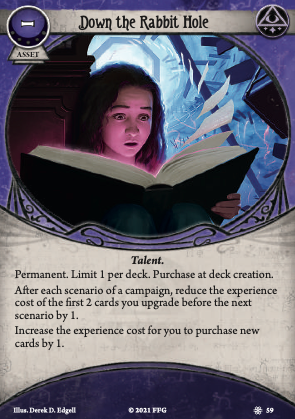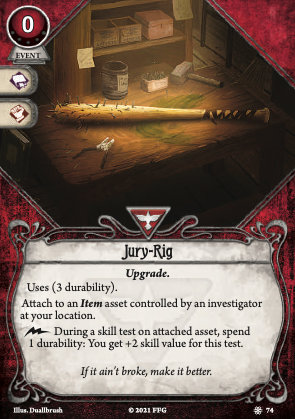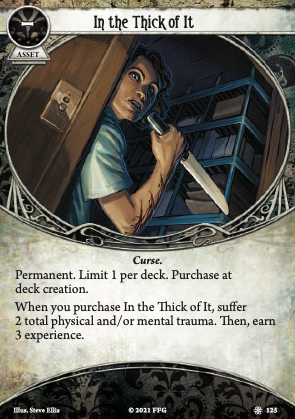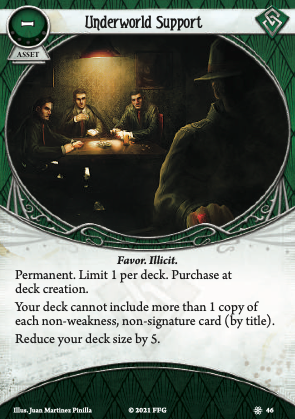
I can't help but notice that Edge of the Earth comes with a lot of level 1+ cards that can be upgraded further. This includes a whole Spell suite, like Divination (1) and Divination (4), which are also good with Arcane Research, but then also stuff like On the Trail (1) and On the Trail (3) and Ice Pick (1) and Ice Pick (3), among others. This synergizes with the investigators in this set that have very limited access to their "off-class" level 0 cards, but also seems like an interesting puzzle with Down the Rabbit Hole. Lily Chen can take this card and use it to discount the upgrade from Butterfly Swords (2) to Butterfly Swords (5), and Norman Withers can do the same for Blur (1) to Blur (4), although it will take one of his 5 Mystic Level 0 slots.
But considering the drawback of this card, is it worth it? You'll pay an extra XP just to get the new Level 1 card in your deck, and get refunded that penalty when you upgrade. Net XP, zero. Ideally, you need to have 14 cards to upgrade in a 8-scenario campaign to get the full value here (we'll see how Edge of the Earth's supposedly different campaign structure affects this), so you'd better really want those non-Level 0 upgradable cards. The EOTE investigators don't really have any other options, though, because Lily & Norman don't have that many Level 0 cards that they could take that upgrade into cards of their "off" class. So, frankly, this card anti-synergizes with the investigators in the box. Your only out is to take In the Thick of It and some trauma for three Level 1 cards, but there still aren't going to be enough cards to upgrade. Strange. But it makes me think we'll have future cards that give you an XP bonus for upgrading cards, without this particular drawback, or more ways to start your deck with non-level 0 cards.
Other Mystics & off-class Mystics should consider this card, though, because of the variety of upgrades now available, including in this set. Daisy Walker can get a discount on upgrading Professor William Webb, and take In the Thick of It to get the upgrade for Eon Chart, among other things. And Father Mateo, starting with an extra 5 XP can spread it out across five Level 1 Spells and get a further discount with an Arcane Research or two, or maybe just spend your starting XP on cards you can't upgrade and don't want the penalty on, and use your Down the Rabbit Hole to upgrade Guts and Robes of Endless Night. Up to you!


